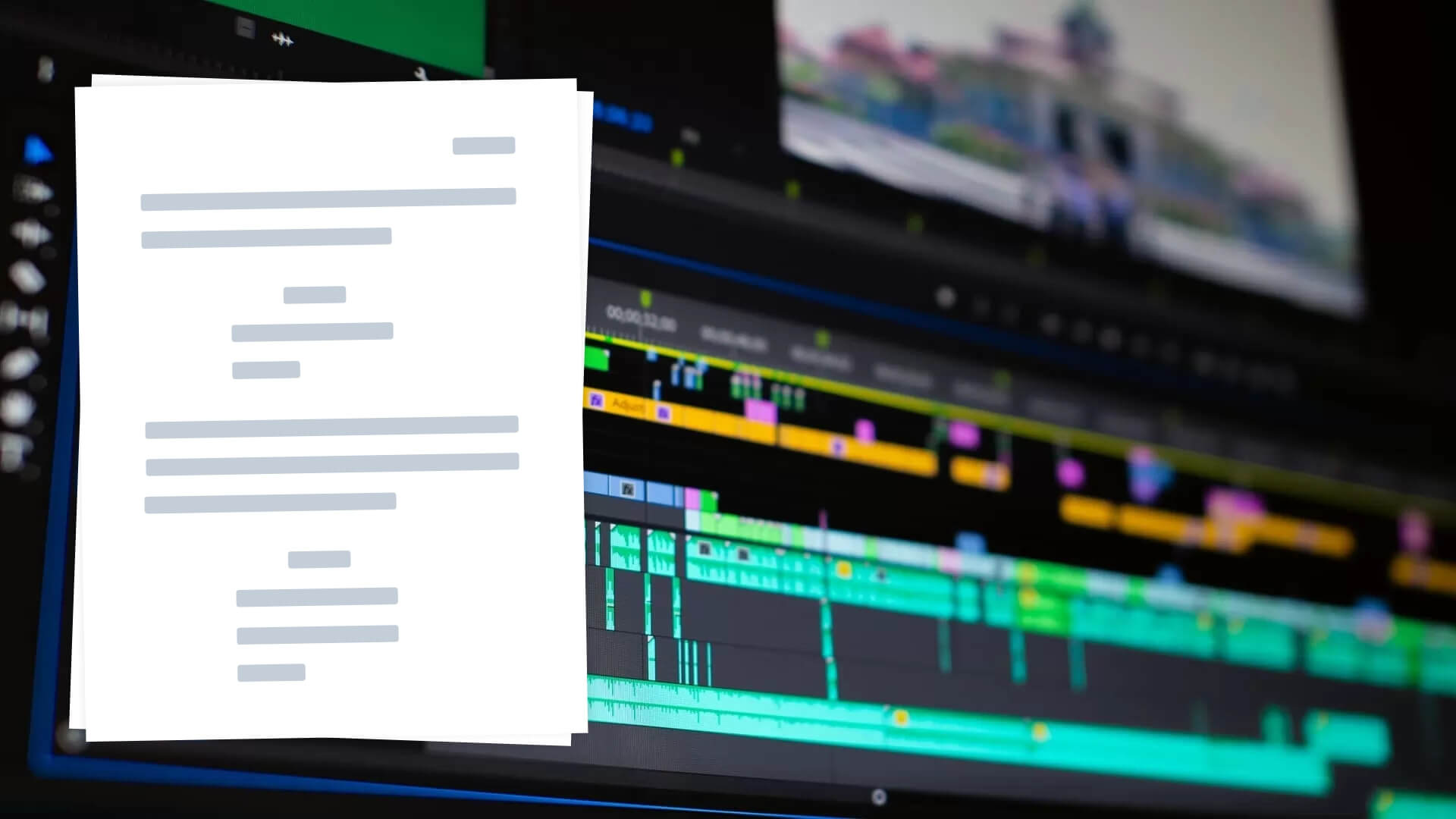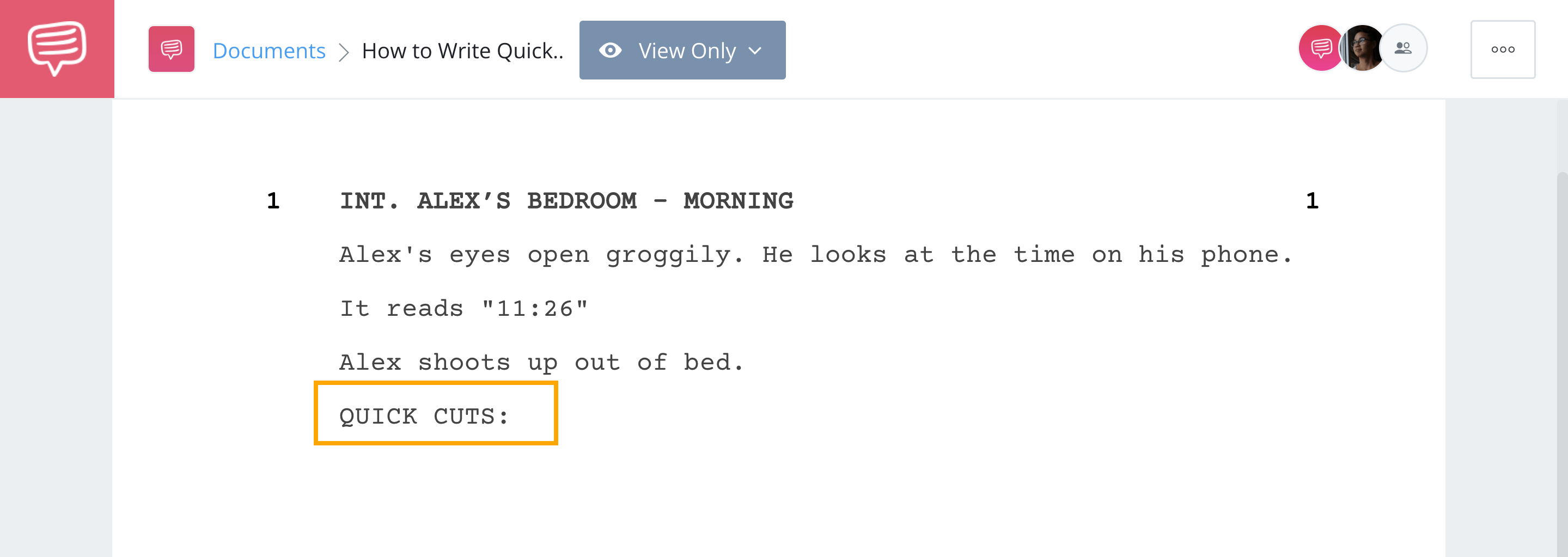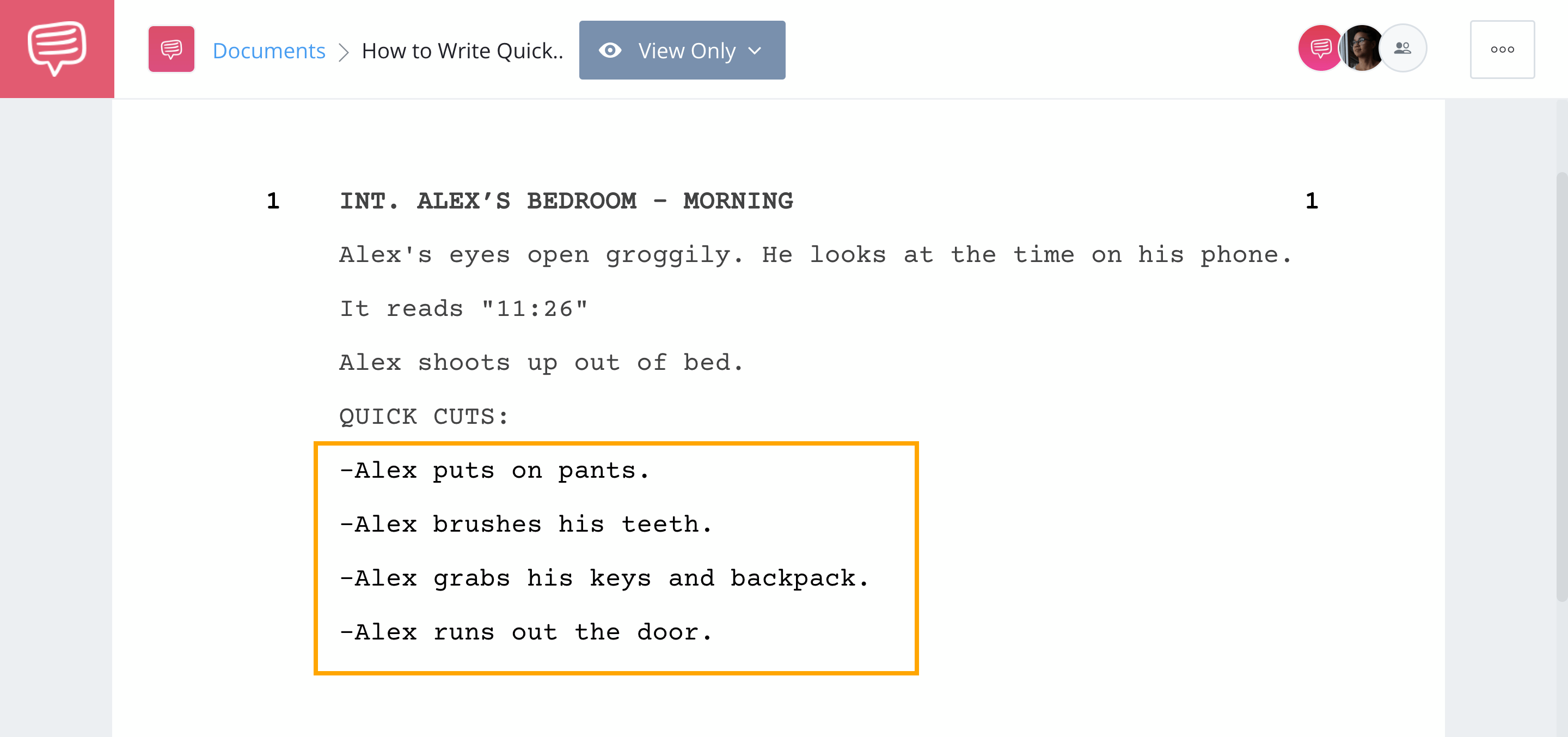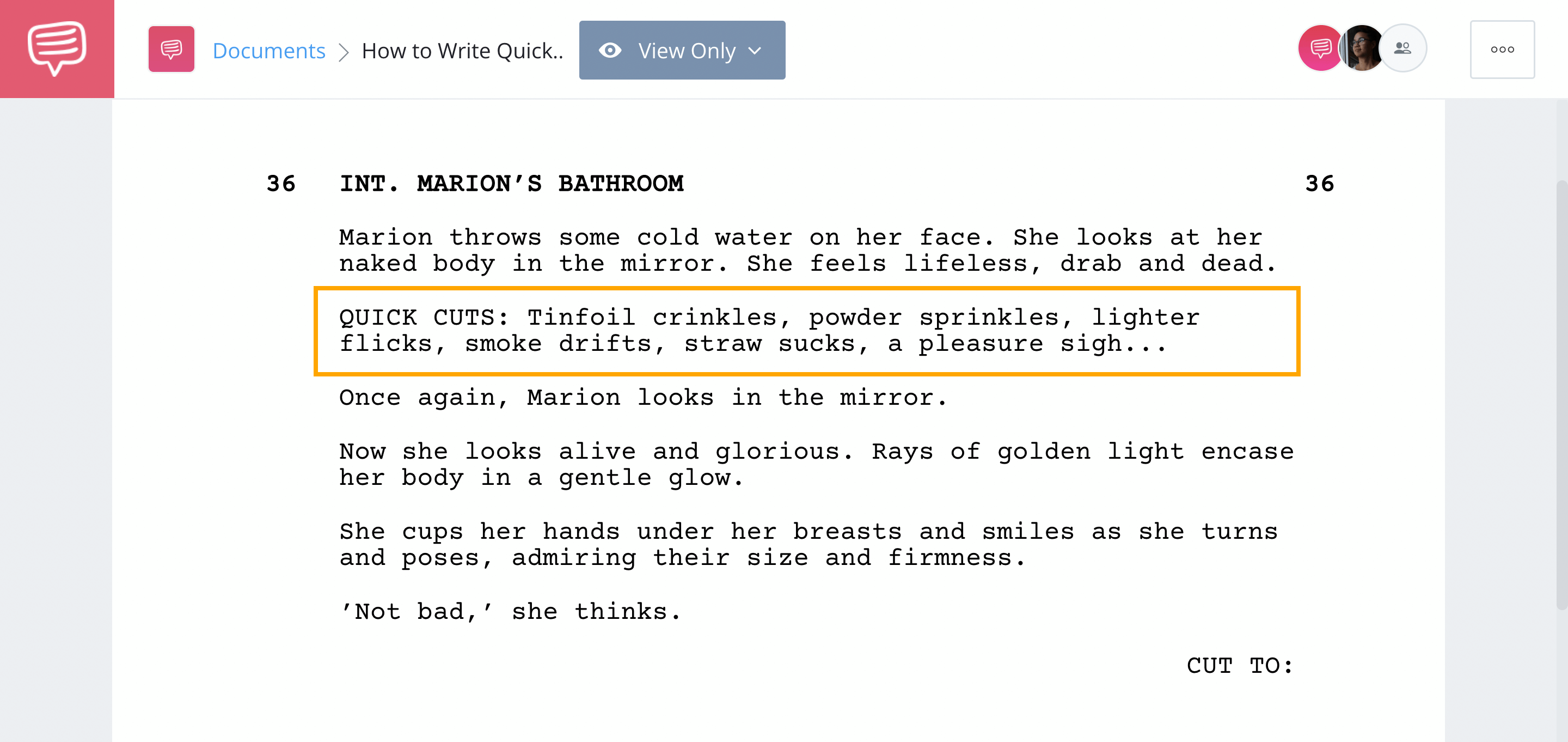One of the more difficult cinematic aspects to communicate through a screenplay is pacing. Oftentimes, pacing relies on the cutting of shots and scenes. While the lengths of scenes can help give a reader the overall pacing of a film, how do you communicate the pacing of quick cuts within a scene? In this article we’ll teach you how to write quick cuts in a screenplay.
Watch: Anatomy of a Screenplay — Ultimate Guide
How to Write Quick Cuts in a Screenplay
Formatting quick cuts
Many of the formatting techniques used in writing quick cuts are similar to the techniques used in writing a montage. If your series of shots is more of a montage be sure to check out how to write a montage in a screenplay.
It’s also important to note that there are different types of cuts in screenplays that can affect how you format your quick cuts. While montages have various shots unfold over a longer, more paced period of time, a series of shots uses quick pacing to show multiple shots back to back in a shorter time period. Other than a montage, screenwriters may use quick cuts for the sequence of a character's actions or to expedite time.
The first technique in learning how to write quick cuts in as screenplay is how to write transitions. We used StudioBinder's screenwriting software to help create an example of how to write quick cuts in a screenplay.
When you arrive at the point where the quick cuts would take place, click on the Action icon on the toolbar to create a line of action description.
How to Write Quick Cuts in a Screenplay • Click on the Action Icon
Then, in all capitalized letters write “QUICK CUTS:”
How to Write Quick Cuts in a Screenplay • Read Quick Cuts Example
Followed by the series of shots that would be cutting quickly.
How to Write Quick Cuts in a Screenplay • Read Quick Cuts Example
This is just one simple way to write quick cuts into a screenplay. There are various screenwriting techniques that will teach you how to write quick cuts in a screenplay format. All techniques, however, have to be fundamentally clear so that the reader will easily understand what is happening. When in doubt, keep it simple. Let’s take a look at an example of how quick cuts are used in a major film like Requiem for a Dream.
Related Posts
Types of Cuts in Screenplays
Requiem for a Dream quick cut example
There are a few types of cuts in screenplays that you might want to learn how to write. In this scene from Requiem for a Dream, quick cuts are formatted into the script as a list of details and actions to establish a sequence of drug use.
Rather than segmenting each quick cut into its own line like in our example above, this screenplay formats the quick cuts within the same line. This is effective because the cuts are of inserts and small actions of the same character.
Types of cuts in screenplays • Read Requiem For A Dream Quick Cuts Example
You can see how establishing “QUICK CUTS:” is important in the screenplay to establish the cinematic and visual unfolding of the sequence. Hopefully learning how to write quick cuts in a screenplay will help you convey the visual ideas you have of a quickly cut sequence in your script.
UP NEXT
How to Write a Montage in a Script
Is your series of quick cuts more of a montage? Montages can unfold over a longer period of time without a quick pace. To learn how to format various types of montages into your screenplay, check out our next article in which we cover how to format montage in various locations with examples.



